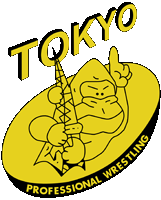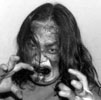
|
||||||||||||||||
|---|---|---|---|---|---|---|---|---|---|---|---|---|---|---|---|---|

Main Wrestlers Version 1 (1966 to 1967)
Main Wrestlers Versions 2 and 3 (1994 to 2000)
Tokyo Pro Wrestling History In the course of puroresu history, three times a promotion has arisen by the name of Tokyo Pro Wrestling. None were particular large, but the version that ran in the mid-90s was moderately successful and had the money backing to pull in some bigger names. It should be noted that while the second two versions had a lot of the same wrestlers, they were not related in any way to the original promotion started by Toyonobori. The first version of Tokyo Pro Wrestling opened in 1966. At the time the Japanese Wrestling Alliance (JWA) was the largest promotion in Japan with little competition, but in the summer of 1966 the president of JWA (Michiharu Toyonobori) was forced out and he soon thereafter formed Tokyo Pro Wrestling. Before he became the president of JWA, Toyonobori was a star of the promotion as he wrestled in the Heavyweight division. He had a number of notable matches, including winning in the semi-main event on the famous 10/07/57 card featuring Rikidozan vs. Lou Thesz. He also frequently teamed with Rikidozan (including winning the JWA All Asia Tag Team Championship and JWA All Japan Tag Team Championship together), and after Rikidozan's death he joined the executive board as President. After splitting with the promotion in 1966, he convinced a young Antonio Inoki to leave with him and help lead his new promotion. At the time, Giant Baba was receiving a stronger push then Inoki in JWA, making Inoki jealous. He jumped at the chance to be the star in a new promotion, and he was joined by other JWA employees/wrestlers including Hisashi Shinma, Masa Saito, Rusher Kimura, Haruka Eigen, and others. On the debut show on October 12th, 1966, Inoki (as promised) main evented against Johnny Valentine. Inoki would win the match that lasted over 30 minutes by countout, a big victory for the young wrestler. Unfortunately for Toyonobori and Inoki, the promotion would fail to take off and by the following spring the promotion was running combined shows with IWE. Soon after that Tokyo Pro Wrestling officially folded. Kimura would stay in IWE (with most of Tokyo Pro's wrestlers), Saito became unaffiliated and Inoki would return to JWA. Toyonobori initially stayed on bad terms with Inoki but would later help him form New Japan. While the original Tokyo Pro would not be considered a success, it did help show early signs of Inoki's discontent with JWA and it also contributed to IWE's success when most of the Tokyo Pro roster jumped to the promotion. Tokyo Pro would pop back up again in December of 1994, completely unaffiliated with Toyonobori and Inoki. After Super World of Sports (SWS) collapsed, many of the wrestlers went their own way to start their own promotions. One of those wrestlers was Takashi Ishikawa, a former sumo wrestler and wrestling veteran who was a former tag team title holder in All Japan before leaving for SWS. This incarnation of Tokyo Pro lasted much longer then the original, as in 1995 Ishikawa ran 17 shows using mostly independent wrestlers from around Japan. In 1996, Ishikawa found a wealthy businessman named Kotaro Ishizawa to help fund his promotion. Ishizawa ran a Bike Express business and was interested in getting in the booming business of puroresu. Suddenly Ishikawa had money to spend and the promotion changed to reflect their deeper pockets. Unfortunately, money did not equal success for the promotion, as they quickly began losing serious money. Tokyo Pro brought over a crew of gaijins in the summer of 1996, including Abdullah the Butcher, Sabu, and Scorpio. They also had feuds with WAR and UWF-I during the fall of 1996, which helped raise the promotion's visibility but not their profits. Attendance did not increase enough to justify their new-found spending, and Ishizawa proved that even though he wanted into the wrestling business he knew nothing about it. There were many instances of the promotion going to a town and there was little or no advertising, and the cards frequently would change at the last minute. Tokyo Pro did have a successful show on December 7th, 1996 at Sumo Hall, drawing an announced crowd of 2,500, but it wasn't enough. Tokyo Pro would not be Ishizawa's downfall, however, as it was the collapse of his Bike Express business in early 1997 that led to the promotion closing. Without the money to cover their losses, the tanking promotion was unable to survive. Ishikawa would go back to obscurity, the American wrestlers would go back to America or to other Independent wrestling promotions, and once again the Japanese wrestlers scattered to different promotions such as Big Japan, FMW, and WAR. Not too long after the promotion's demise, it returned to the independent scene as Shin Tokyo Pro Wrestling. Ishikawa still wrestled there, but now the promotion was run by a young Shigeo Okumura. This time the promotion followed closer to Ishikawa's original plan, as they did not over-spend and ran a tighter ship. Other wrestlers that participated for the new promotion in 1997 included Kishin Kawabata, Shunme Matsuzaki, and Bad News Allen. This also proved to be the most obscure version of Tokyo Pro, however, as they had no TV and began running shows very infrequently. None of the wrestlers were contracted and Tokyo Pro was one of a dozen small promotions that used the same basic pool of wrestlers. In 1998 Okumura began wrestling for All Japan but still was the leader of Tokyo Pro. As All Japan took up more of his time, Okumura ran fewer and fewer shows. The promotion never officially ended, but Okumura began wrestling full time in All Japan in 2000 and he hasn't run a Tokyo Pro show since then. What is Tokyo Pro Wrestling's legacy? The first version led to a boosted IWE and not much else, although one could argue that if Tokyo Pro had been successful then Inoki might have never created New Japan. The second version was just one of a dozen promotions in the mid-90s, and since many others were more successful in the end it was just another promotion with a rich sponsor that disappeared even quicker then it started. Then there was the third and final version, which was even less significant then the 2nd version. Again, it should be noted that the first version was completely unrelated to the last two, but a lot of the wrestlers were the same in the 2nd and 3rd versions. Tokyo Pro will likely be remembered over time as just another failed (three times over) wrestling promotion with a lot of promise but with little results to show for the hard work the wrestlers put into it. |
||||||||||||||||
|
















